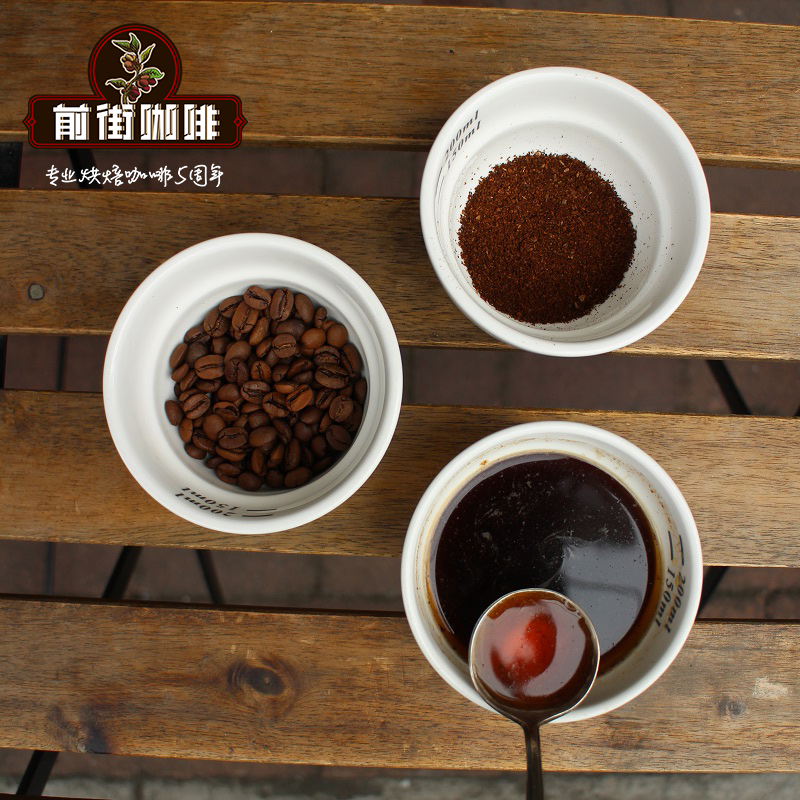Coffee beans what is the difference between cod beans / round beans Peaberry and mother beans / flat beans? Bali beans, Hawaii

Professional coffee knowledge exchange more coffee bean information please follow the coffee workshop (Wechat official account cafe_style)
Coffee beans what is the difference between cod beans / round beans Peaberry and mother beans / flat beans? Bali beans, Hawaiian Kona beans?
Before we talk about the mystery of the sex of male beans and female beans, let's first know a few things. First of all, the coffee tree itself is not divided into male and female trees. In fact, coffee flower is a plant with both male and female organs, belonging to the family Rubiaceae. The coffee bean itself is the core seed of the coffee fruit before it is roasted, and it can grow on its own after falling into the soil, even if only one tree can grow the coffee fruit. Since it is hermaphroditic, there is no difference between male and female trees, and naturally there should be no difference between male and female beans. Furthermore, the original English word of "Gongdou" is "Peaberry" or the abbreviation "PB", but it is not called "Male Beans". The word "Gongdou" is just a common name in Chinese. in fact, he has another name, "Yuandou".
VS flat beans
There is about a 5% chance that Peaberry will be produced in the same tree. Coincidentally, most meatbeans grow at the end of the branch. In botany, there is a substance called IAA, which is a plant hormone (earthworm butyric acid usually exists at the top of the plant) and is based on the principle of apical bud priority. That is, the farther away from the trunk, the fruit or branches and leaves are naturally less efficient in absorbing nutrients because they are farther away from the trunk. Based on the growth advantage (expanding the territory outward or upward as soon as possible), the trunk will give priority to transporting most of the nutrients to the ends of branches and leaves in order to gain growth advantage. (vermicularic acid is positive in the host plants), and because generally speaking, most of Peaberry grows at the ends of branches and leaves. So the natural intake of nutrients is more abundant, which is why Peaberry is more expensive in beans of the same grade.
Public beans (round beans) are classified as defective beans in botanical theory for several reasons: one is that coffee beans suffer from diseases and insect pests before bearing fruit, or it may be caused by coffee trees suffering from prolonged drought or malnutrition. In addition, coffee beans at the ends of branches also have a higher chance of forming round beans, which may be due to poor growth due to more opportunities to be exposed. When the normal form of coffee fruit is peeled, there are two coffee nuts (seeds) inside, called "Type-1". This is the most normal form of coffee beans, that is, the mother beans or flat beans in the theory of male and female beans. The other is the elliptical shape of "Type-2", which has only one seed, which is what we call round beans. In fact, there is only a difference in growth form between the two, not a gender distinction. The common name in Chinese is indeed easy to be misunderstood.
Some coffee lovers think that Peaberry beans have a better mellow thickness and charming aroma, and taste sweeter. In addition, because of its relatively scarce production, Peaberry has become a commercial means to be bid up and sold at a high price, but in fact, Peaberry beans are sometimes discarded because they are regarded as defective beans in some producing areas, and Peaberry has little commercial value to them.
It is still difficult to determine whether public beans (round beans) taste better in the end. At present, the common round beans on the market, well-known are Hawaii KONA round beans, Tanzania round beans, Jamaica Zhenglan Mountain coffee round beans and so on. Usually as long as the price of round beans is bound to be high, whether it is worth it or not depends on the ruler in the mind of the drinker.
The correct words are "flat bean Flat Beans" and "round bean Peaberry". Under normal circumstances, there are half-divided flat beans (seeds) in a coffee berry, but in a few cases the internal seeds do not split, but a round bean with complete oval particles. Generally speaking, the yield of round beans is about 50% of that of flat beans.
Public bean coffee is fascinating, but then again, only heard that flowers have male and female, coffee beans are the seeds of coffee trees, how can there be a difference between male and female seeds? Does the seed of the male bean grow into a male tree, while the female bean grows the female tree? Of course, this conjecture is nonsense; there is no difference between male and female coffee trees, and each coffee flower has both male and female organs; so what's wrong with public bean coffee? In fact, "public bean coffee" is a deformed fruit. A normal coffee bean should have two seeds, but because one of the seeds is stunted, the other one is particularly hypertrophic, and because it gets double nutrients, it tastes better than mother bean coffee.
The mother bean is that we generally see the coffee bean is half-sided, the appearance is relatively flat, the middle groove is obvious after baking; the male bean is a whole bean, the appearance is oval, the middle groove is fine after baking, and maintains the whole shape of the original bean. Only 5% of a coffee tree is male beans, and the rest are female beans, that is, for every 100 grams of output, only 5 Murray 6 grams of beans can be selected.
Bali's famous golden coffee beans, especially male beans, have become rare and expensive under the magic promotion. It boasts that the coffee is not sour, very fragrant and strong, as well as male beans and mother beans. A male bean is a coffee bean is a complete spherical bean, and a mother bean is a coffee bean with only hemispheres. Only 5% of a coffee tree is male beans, and the rest are female beans, so the price of male beans is very high, with six packets of NT $2200 and six packets of mother beans of NT $1000. He said that public beans are more fragrant and mellow. In fact, the mother bean is cooked with an electronic coffee machine, while the male bean is cooked in a siphon coffee pot. Basically, there is a big difference between the two cooking methods.
Hawaiian Kona coffee, grown on the southwest coast of the island of Hawaii, grows in volcanic soil. Raw beans: Extra Fancy characteristics: full of nutty and attractive aroma, sweet and smooth taste, medium texture, good sour taste, very rich flavor.
Qianjie recommended cooking: [V60 hand]
Filter cup: Hario V60
Water temperature: 88 degrees
Degree of grinding: small Fuji degree of grinding 4
Cooking methods: the ratio of water to powder is 1:15, 15g powder, the first injection of 25g water, 25 s steaming, the second injection to 120g water cut off, waiting for the powder bed water to half and then water injection, slow water injection until 225g water, extraction time about 2:00
Analysis: using three-stage brewing to clarify the flavor of the front, middle and back of the coffee. Because the V60 has many ribs and the drainage speed is faster, when the water is cut off, it can prolong the extraction time and better extract the nut and chocolate flavor of the tail section.
Important Notice :
前街咖啡 FrontStreet Coffee has moved to new addredd:
FrontStreet Coffee Address: 315,Donghua East Road,GuangZhou
Tel:020 38364473
- Prev

Guatemala Koban production area Vista Beauty Manor introduces what is the flavor of coffee in Koban area?
Professional Coffee knowledge Exchange more information about coffee beans Please follow Coffee Workshop (Wechat official account cafe_style) melon is a nickname for Guatemala. The Mayan town sits on top of 37 volcanoes, two of which erupted in 2010. Coupled with frequent tornadoes and natural disasters everywhere, it is truly dangerous.
- Next

Costa Rican Diamond Series Coffee Bean Story grand cru series Rose Summer Honey treatment characteristics
Professional coffee knowledge exchange more coffee bean information Please pay attention to the coffee workshop (Wechat official account cafe_style) when it comes to honey treatment, we have to mention Costa Rican coffee, you know, we can drink a wide variety of honey-treated coffee on the market today, Costa Rica is contributing a lot. The dedication of the landowners to coffee is reflected in the wide variety of honey treatments in Colombia.
Related
- Detailed explanation of Jadeite planting Land in Panamanian Jadeite Manor introduction to the grading system of Jadeite competitive bidding, Red bid, Green bid and Rose Summer
- Story of Coffee planting in Brenka region of Costa Rica Stonehenge Manor anaerobic heavy honey treatment of flavor mouth
- What's on the barrel of Blue Mountain Coffee beans?
- Can American coffee also pull flowers? How to use hot American style to pull out a good-looking pattern?
- Can you make a cold extract with coffee beans? What is the right proportion for cold-extracted coffee formula?
- Indonesian PWN Gold Mandrine Coffee Origin Features Flavor How to Chong? Mandolin coffee is American.
- A brief introduction to the flavor characteristics of Brazilian yellow bourbon coffee beans
- What is the effect of different water quality on the flavor of cold-extracted coffee? What kind of water is best for brewing coffee?
- Why do you think of Rose Summer whenever you mention Panamanian coffee?
- Introduction to the characteristics of authentic blue mountain coffee bean producing areas? What is the CIB Coffee Authority in Jamaica?

